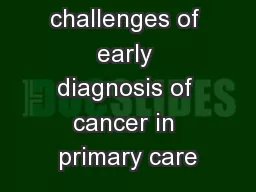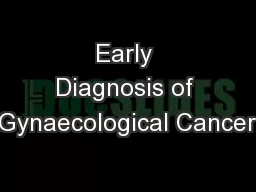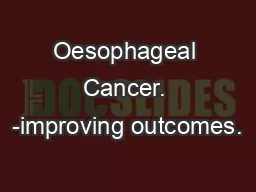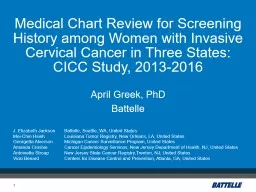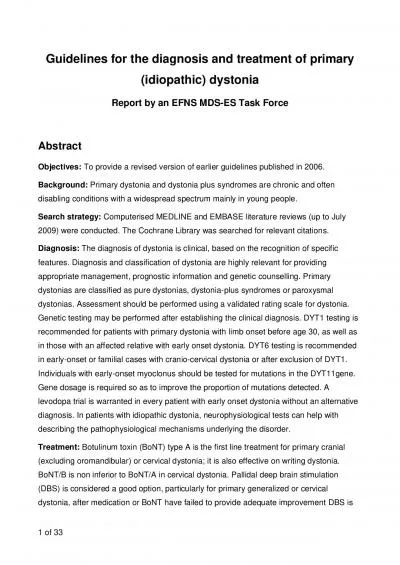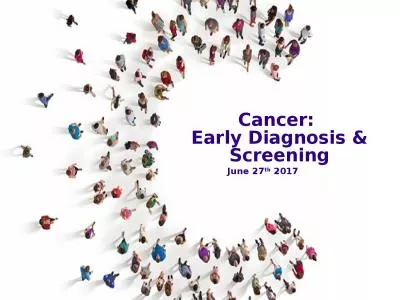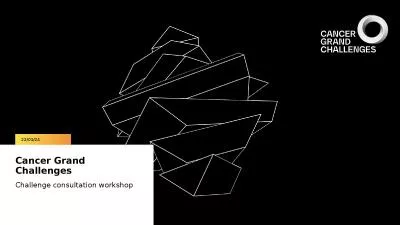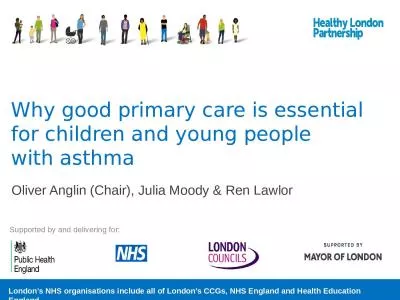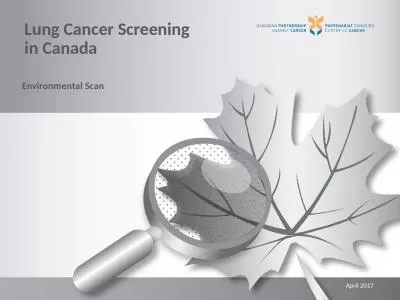PPT-The challenges of early diagnosis of cancer in primary care
Author : conchita-marotz | Published Date : 2017-07-09
Jon Emery Professor of General Practice University of Western Australia Director of PC4 Early cancer diagnosis I went to see my oncologist in hospital earlier this
Presentation Embed Code
Download Presentation
Download Presentation The PPT/PDF document "The challenges of early diagnosis of can..." is the property of its rightful owner. Permission is granted to download and print the materials on this website for personal, non-commercial use only, and to display it on your personal computer provided you do not modify the materials and that you retain all copyright notices contained in the materials. By downloading content from our website, you accept the terms of this agreement.
The challenges of early diagnosis of cancer in primary care: Transcript
Download Rules Of Document
"The challenges of early diagnosis of cancer in primary care"The content belongs to its owner. You may download and print it for personal use, without modification, and keep all copyright notices. By downloading, you agree to these terms.
Related Documents

